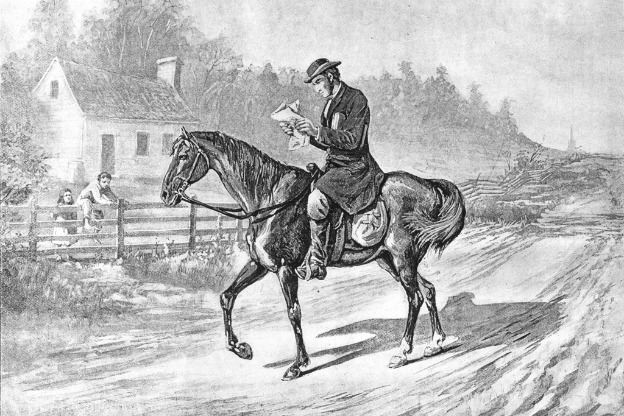 Moment of Indiana History
Moment of Indiana History
Posts tagged Bloomington
August 15, 2011
![]()
A War Correspondent’s Salad Days
"Bloomington is a nice place although it isn’t as big nor as modern as Champaign. The University is a nice place, not out-of-date like I had always heard."
January 24, 2011
![]()
Name Rings A Bell
In January 2007, when Joshua Bell performed in a Washington D.C. metro station for 45 minutes, only six people stopped to listen to the unidentified violinist.
March 30, 2009
![]()
Sorority Girl, Farm Wife, Environmental Advocate: Rachel Peden
In two long-running newspaper columns and three books, IU graduate Rachel Peden dispensed lessons gleaned from a life lived in tandem with the land. Since 1952, the Children’s Farm Festival at the Peden Family Farm outside Bloomington continues to be a long-awaited spring tradition.
October 6, 2008
![]()
James Watson
Growing up in Chicago, James Watson was into watching birds– and matching wits on the popular syndicated radio and TV series, Quiz Kids . Even with all this extracurricular activity, Watson managed to graduate from high school at age 15, issuing directly into the University of Chicago in 1943.
June 16, 2008
![]()
Meg Cabot
The ranks of Indiana writers boast such venerable names as Kurt Vonnegut, Jessamyn West, James Whitcomb Riley and Theodore Dreiser. But one of the state’s best-selling authors to date bears little kinship with the traditions of satire, historical fiction, sentimental verse and gritty realism represented by those literary forbears.
February 25, 2008
![]()
Dr. King and the Little Five
A group of black students committed to achieving racial justice through nonviolent means was already in existence at Indiana University Bloomington by the spring of 1968. But the assassination of Dr. Martin Luther King, Jr. on April 4 th in Memphis, Tennessee galvanized black activism on campus.
February 18, 2008
![]()
No More Beauty Queens
Although race relations on most college campuses in the 1960s were volatile, the Bloomington campus of Indiana University was relatively progressive in attempting to establish civil rights for all of its students. Despite the state’s Southern ties, and the sometime pervasiveness of the Ku Klux Klan throughout Indiana government, Bloomington provided a less hostile environment for blacks than other places in the state.
February 11, 2008
![]()
Leveling the Playing Field
One of the ways black students encountered racism in Bloomington in the 1940s was in its eating establishments, many of which illegally refused them service. One undergraduate student was particularly frustrated not to be able to get a quick meal between classes. Although George Taliaferro’s life-sized photo hung inside the Book Nook on Indiana Avenue, the defensive back who had led the Hoosiers to their first Big Ten victory in 1945 had to trek all the way to the west side of town to get fed.
February 4, 2008
![]()
The Father of the School of Law
Long before racial tensions came to a head in the 1960s, the quest for integration was underway on Indiana University’s Bloomington campus. Important strides were made during the tenure of the university’s eleventh president, Herman B. Wells.










